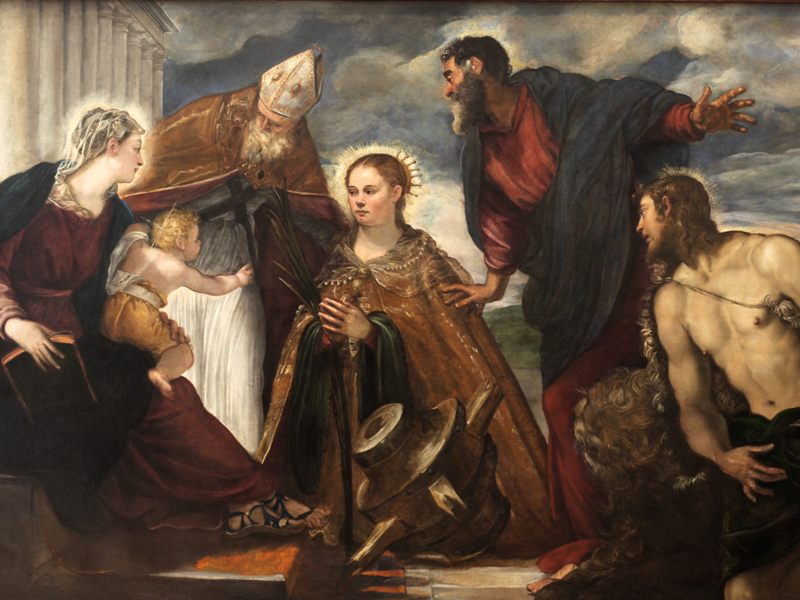Reinier advises national and international companies
reinier.russell@russell.nl +31 20 301 55 55Paul is a highly experienced, creative and tenacious litigator
paul.russell@russell.nl +31 20 301 55 55Countries can recover cultural heritage that was illegally exported. Art dealers and collectors might be confronted with such a claim unexpectedly, for instance if they have bought an artwork at an auction. If it turns out that the artwork was indeed exported illegally, it must be relinquished to the state in question. If the buyer has bought it in good faith, he is entitled to a compensation.

For cultural heritage from the European Union, this is all covered by the directive on the return of cultural objects (Directive 2014/60/EU). How this scheme works in practice is illustrated by a recent case before the District Court Gelderland.
An art dealer had bought several Italian paintings at an auction and offered them for sale via his own website. A secretary recognized the paintings as altarpieces that were stolen from the Abbey of Santa Maria in Sylvis, a listed building in Italy, in 2002. At the request of the Italian police, the Dutch Public Prosecution Service seizes the two altarpieces. The aim is the return of the altarpieces to Italy where (1) further investigations regarding the paintings will be carried out and (2) the paintings will possibly be returned to the original owner.
In preliminary relief proceedings against the Dutch Public Prosecution Service, the art dealer requests the return of the artworks. According to him, the seizure is not necessary to determine the truth. He is willing to cooperate in an investigation into whether the artworks involved are indeed the stolen paintings. The immediate restitution to the Abbey is no ground for seizure. As he is a buyer in good faith, he is the one who is entitled to the artworks. In addition, he is entitled to a compensation if he has to return the artworks to Italy. If the works of art are immediately relinquished to the Abbey, he will lose that right.
The court determines that further investigations regarding the paintings are required. According to the description, the characteristics of the works of art offered for sale partly differ from those of the stolen paintings. Therefore, the seizure remains in force.
However, restitution to the Abbey is no ground for seizure. If the paintings turn out to have been stolen, there is a standard procedure for restitution within Europe, so-called revendication proceedings. Thus, after the authenticity research the paintings have to be returned to the art dealer. The Italian State is not allowed to keep the paintings, even if the paintings have indeed been stolen. The Dutch Public Prosecution Service must ensure that they are indeed returned.
If the paintings turn out to have been stolen, the Italian State has to commence legal proceedings for the restitution of the paintings in the Netherlands. Then, the Dutch court will decide who is entitled to the paintings. In the event of proven theft this will be the Abbey. The question then arises whether the art dealer is entitled to compensation. This will only be the case if he was in good faith. The Public Prosecution Service doubts this, as the paintings had appeared on the internet as stolen. The judge does not rule on this. This is not possible in preliminary relief proceedings.
Could the art dealer have prevented all this? As a general rule, if the buyer does not carry out any research prior to the purchase of a work of art, it is at his risk if he buys a stolen or false work of art. In this case a provenance research was not possible, because at auctions works of art are regularly auctioned without the name of the seller being made public.
Can the buyer at an auction do nothing to prevent this? The buyer can check prior to the purchase whether works of art appear on a national list of cultural heritage or in the Art Loss Register. This seems cumbersome for works of art of low value, but it can prevent a lot of legal issues.
Is your purchase claimed by a previous owner or would you like to claim an artwork that was stolen from you? Do you want to know how to prevent the purchase of stolen or false art? Or do you have any other questions regarding buying and selling of art? Please contact us:
The provenance research regarding looted art in Dutch museums has been largely completed. What are the results and how can you, as a heir, submit a claim?
The Advisory Committee for the Protection of Cultural Property (also referred to Pechtold Committee) presented its advice to the Minister of Culture on 30 September 2019. What are the consequences, among others for art dealers, collectors and foundations?
In his interview on “Hidden Gems – Treasured artwork adds to allure of Netherlands”, Reinier Russell talks about how artworks still reflect the spirit of the Golden Age and where they can be found.
A new EU regulation requires anyone wishing to import cultural goods into the EU to have an import license or submit an importer’s declaration. When is which type of document required? How does it affect art dealers, galleries, auction houses and collectors, both inside and outside the EU?
An African mask that was sold for 150 euros fetched 4.2 million euros at an auction. Were the French sellers able to undo the sale? How would this case have ended in the Netherlands?
After nine years, it is finally clear to whom the Crimean treasures should go. According to the Supreme Court, they should go to the state of Ukraine, the owner and custodian of the archeological objects that were on loan to the Allard Pierson Museum in Amsterdam in 2014. How did the Supreme Court reach its verdict?